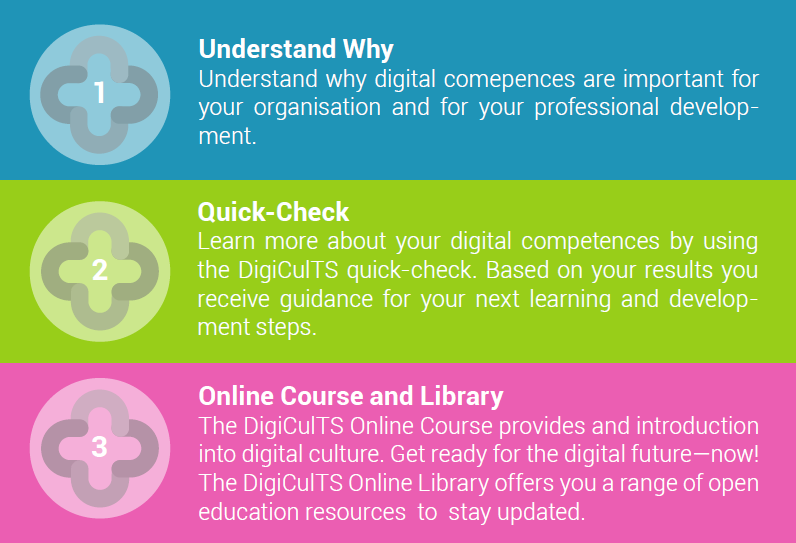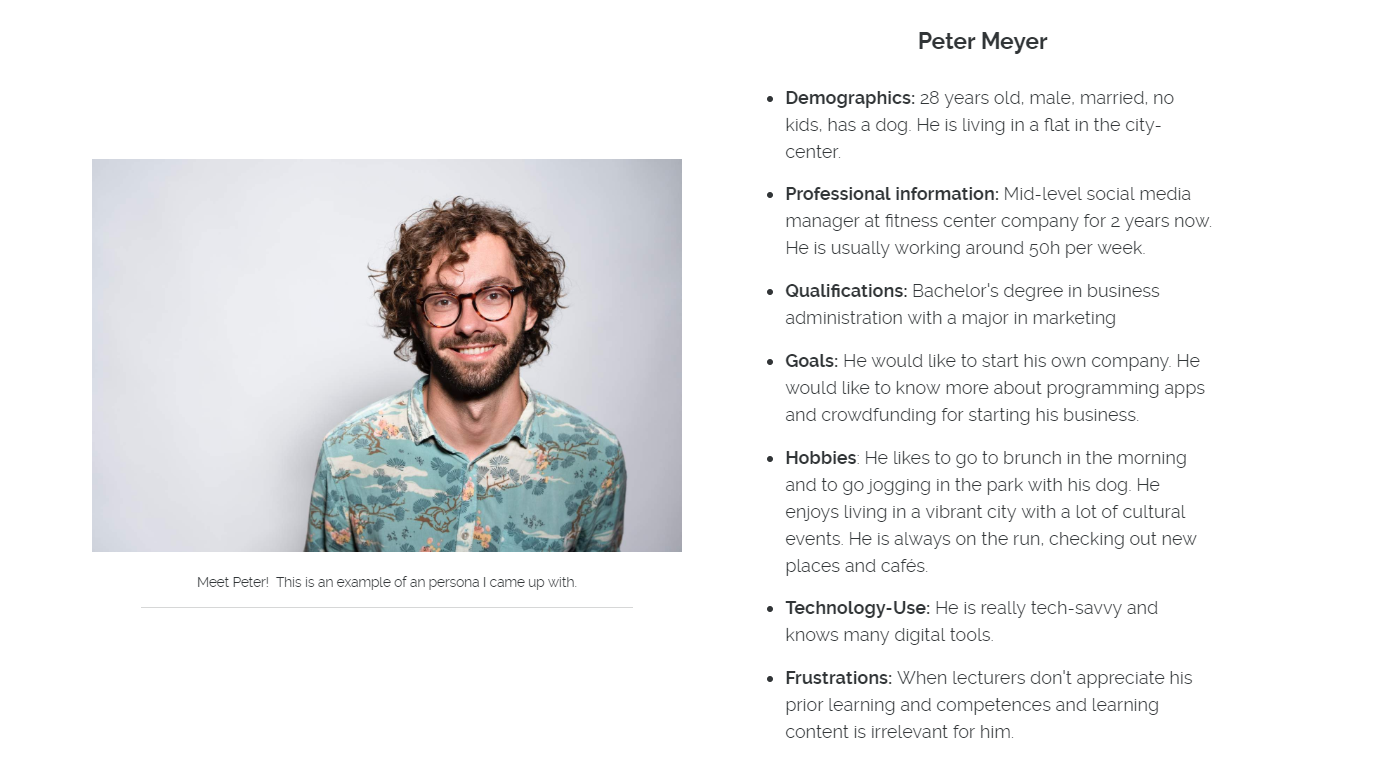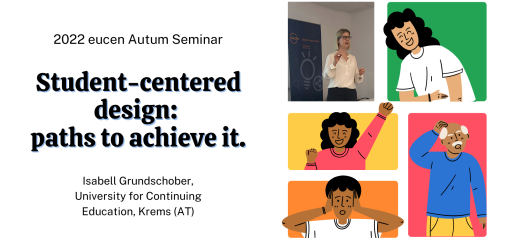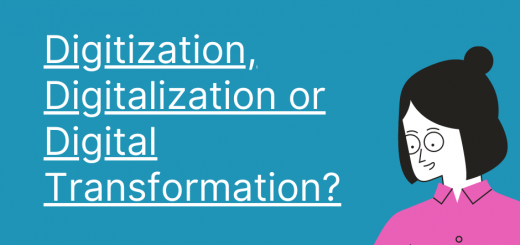Writing Personas for Curriculum and Course Design
Using the persona approach for learner-centred curriculum and course design – basics of lifelong learning design.
In this blogpost, I am explaining how personas can be used for didactical design. In the DigiCulTS project, we are using the persona approach to make our online course more relevant to our target group: SME.
Student-Centred Design
Developing a student-centred curriculum and course design is crucial to support lifelong learning and continuing education. (EHEA)
I am suggesting an approach, which is called “user-centred design”– originally used in software design, this approach is a great match for innovative, iterative, and student-centred course design. It is in line with student-centred course design, as both approaches are focussing on the individual and his/her cognitive processes.

More in specific, I make use of a certain approach in user-centred design, which is called “persona”-approach. I am currently using the persona approach in the Erasmus+ project DigiCulTS.
Make it Relevant!

My goal for DigiCulTS is to design and implement an open online course for people working in small and medium entreprises. It is all about digital transformation and digital culture: What is it? Why is it relevant for me? And how can I make my company ready for future?
The persona approach helps the DigiCulTS team to find out more about our target group and to make the course relevant to them!
What is a Persona?
“A persona is a fictional character built that models actual users. It’s not a real person; however, it’s built on common characteristics that your learners share. Personas are built to represent large portions of your user base — in this case, your learners.”
Huprich 2019
To get a better idea, check out the following videos about personas and how they are useful for your didactical design:
Meet Peter!
This is an example of a persona I came up with for the COMPASS Online Summer School, where I was working with colleagues from the University of Barcelona, Gemma Mas and Marta Viladot. The Summer School takes place from July to September 2020 and is all about didactical design for LLL.

Personas can give you hints regarding learning outcomes, which prior learning experiences could be assumend and which digital competence level your potential learners have. They help you to understand what the learners are expecting from the educational programme for themselves and for their lives.
A practicle example how the persona approach influences the design of higher education courses and curricula, including choosing delivery styles, pedagogical implications and learning outcomes, can be read in “Understanding the Student Experience through the Use of Personas” by Lilley, Pyper & Attwood, 2012
Knowing about the potential learners of your course not only helps you when design a course or curriculum – but also for developing a student recruitment strategy.
Student Recruitment
How to attract students to your education programme? Not always easy, there are many educational programmes out there. How can you reach your target group? Especially in lifelong learning this is a very important topic.
“Given the fact that undertaking a new education is a process that requires extensive thought, it can be argued that education search is a high-involvement decision.” (Galan, Lawley and Clements 2015) This high-involvement decision process takes 4 steps, which can be supported by different methods:
- Problem Recognition
- Information Search
- Evaluation of Alternatives
- Decision
Depending on the information you can gather through the persona approach, you’ll get hints how you can support this process.
Limitations
“Personas do have limitations and it is important to realise changes are inevitable. Yes, what once were the needs and motivations of your users yesterday, they can change tomorrow. Thus, personas are never complete, but always responding to change. You can always get started today with collecting data about your customers.” (Neej 2016)
“The persona approach requires empathy, the ability to see the world from another’s perspective. Therefore, it may be the approach is most attractive to designers who have this ability. It is possible that the technique is less useful for those, who are less able to do this. Finally, personas can never provide a perfect prediction of how the eventual users will respond. Therefore, a level of testing of the design will be helpful, especially when designing for more challenging populations.” (Bagnall, Dewsbury, Sommerville 2005)
So as you can see, there are some limitations, but still one step closer to student-centred didactical design.
What Do You Think?
Have you heard from the persona approach before? Connected to software design or even connected to didactical design?
Maybe you have already used it – how did you like it? Please share your experiences in the comment section!



1 Response
[…] Link do bloga: http://www.isabellgru.eu/index.php/2020/06/30/writing-personas-for-curriculum-and-course-design/?fbclid… […]